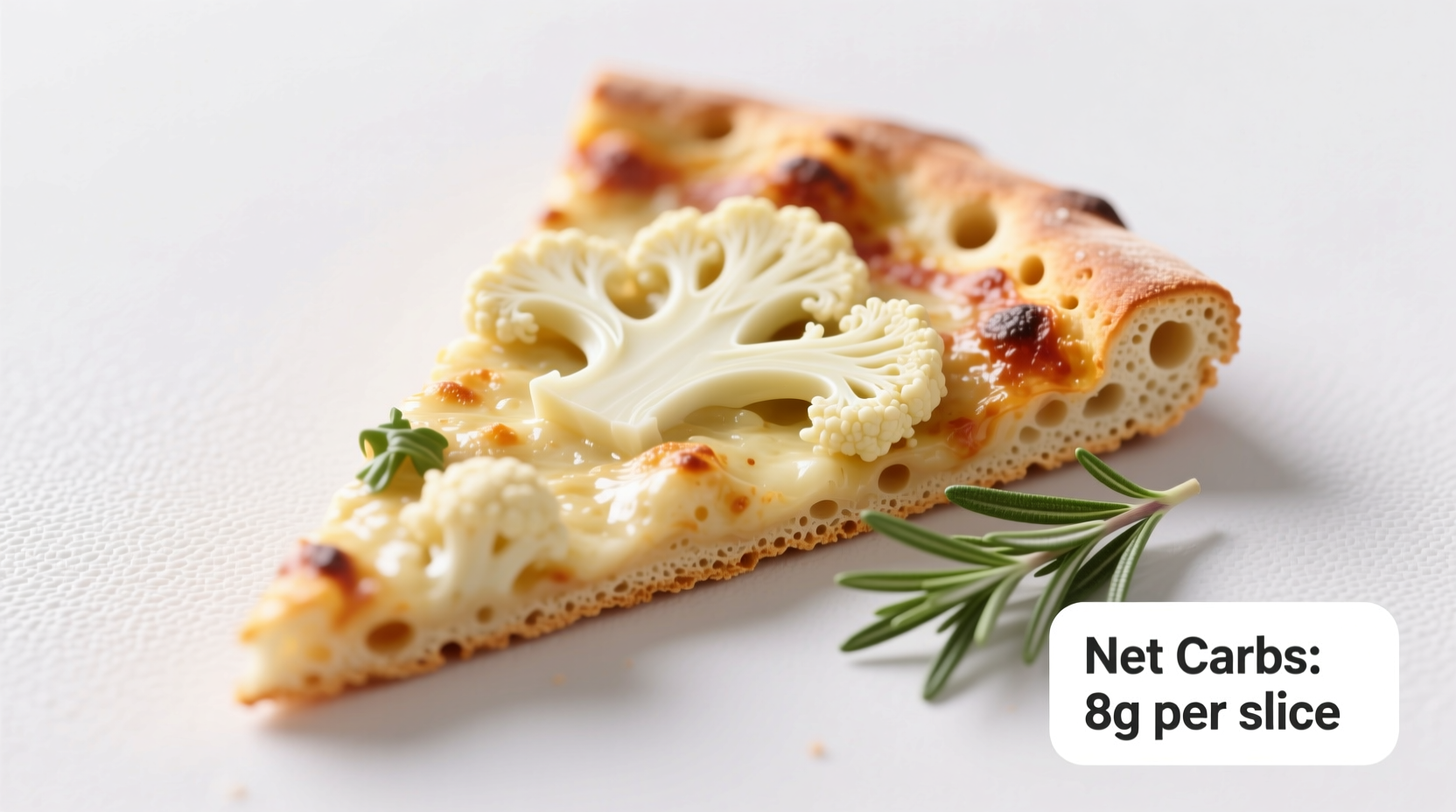Why Carb Count Matters for Pizza Lovers
For those managing carbohydrate intake due to diabetes, keto diets, or general health goals, understanding the carb content in alternative pizza options is crucial. Cauliflower pizza has surged in popularity as a low-carb alternative, but actual carb counts vary based on preparation methods and additional ingredients.
Breaking Down the Numbers: Cauliflower Crust vs. Traditional Crust
| Pizza Crust Type | Total Carbs (per 100g) | Net Carbs (per 100g) | Fiber Content |
|---|---|---|---|
| Traditional wheat crust | 40-45g | 35-40g | 2-4g |
| Store-bought cauliflower crust | 8-12g | 5-8g | 3-5g |
| Homemade cauliflower crust | 6-10g | 3-6g | 4-6g |
Data sourced from the USDA FoodData Central database shows that cauliflower itself contains only 3g net carbs per 100g, but commercial cauliflower pizza crusts often include additional ingredients like cheese, eggs, and sometimes rice or almond flour that increase the total carbohydrate count.
How Preparation Affects Carb Content
The carb count in cauliflower pizza isn't fixed—it depends heavily on preparation methods. When making cauliflower pizza at home, the moisture extraction process significantly impacts the final carb density. Properly squeezed cauliflower contains less water, resulting in a crust with higher nutrient density per serving.
Commercial brands vary widely in their formulations. Some add starches or flours to improve texture, which increases carb content. According to a 2023 analysis by the Healthline Nutrition Team, popular store-bought cauliflower crusts range from 4-12g net carbs per serving depending on the brand and specific product line.

Dietary Considerations for Different Eating Plans
For keto dieters aiming for 20-50g net carbs daily, a single serving of cauliflower pizza (5-8g net carbs) leaves room for toppings while staying within limits. Traditional pizza would consume most or all of a keto dieter's daily carb allowance in just the crust.
The American Diabetes Association notes that lower-carb alternatives like cauliflower pizza can help with blood sugar management. Their 2024 dietary guidelines for diabetes management specifically mention vegetable-based crust alternatives as "reasonable substitutions that can reduce post-meal glucose spikes compared to refined grain options."
Maximizing the Low-Carb Benefits
To keep your cauliflower pizza as low-carb as possible:
- Choose crusts with minimal added ingredients beyond cauliflower, cheese, and eggs
- Avoid crusts containing rice flour, tapioca starch, or other high-carb binders
- Monitor portion sizes—even low-carb options can add up
- Be mindful of high-sugar toppings like certain tomato sauces
Registered dietitians at the Mayo Clinic recommend checking nutrition labels carefully, as some "cauliflower" crusts contain more cauliflower by volume than by weight, with other higher-carb ingredients making up the majority of the nutritional profile.
Practical Guidance for Health-Conscious Pizza Lovers
When evaluating cauliflower pizza options, focus on net carbs (total carbs minus fiber) rather than total carbs, as fiber doesn't impact blood sugar. The difference between store-bought and homemade versions often comes down to added binders—homemade versions typically offer more control over ingredients and lower carb counts.
For those strictly monitoring carb intake, making your own cauliflower crust allows customization to achieve as low as 3g net carbs per serving. Simply process riced cauliflower, squeeze out excess moisture thoroughly, then mix with egg and cheese before baking.
Frequently Asked Questions
How many carbs are in a typical serving of cauliflower pizza crust?
A standard serving (about 100g) of cauliflower pizza crust typically contains 5-8 grams of net carbs, though this varies by brand and preparation method. Homemade versions can be as low as 3-6g net carbs when prepared with minimal additional ingredients.
Is cauliflower pizza truly lower in carbs than regular pizza?
Yes, cauliflower pizza is significantly lower in carbs than traditional wheat-based pizza crust. While regular pizza crust contains 25-40g of net carbs per serving, cauliflower crust typically has only 5-8g, making it a viable option for low-carb and keto diets when prepared properly.
Does cauliflower pizza count as a vegetable serving?
While cauliflower pizza contains cauliflower, the processing and additional ingredients mean it doesn't provide the same nutritional benefits as a whole vegetable serving. Most nutritionists recommend counting it as a starch alternative rather than a vegetable serving due to the altered nutritional profile.
Can I eat cauliflower pizza on a keto diet?
Yes, cauliflower pizza can fit within a keto diet when consumed in appropriate portions. With approximately 5-8g net carbs per serving, it leaves room for low-carb toppings while staying within typical keto carb limits of 20-50g net carbs daily. Always check specific product labels as carb counts vary between brands.











 浙公网安备
33010002000092号
浙公网安备
33010002000092号 浙B2-20120091-4
浙B2-20120091-4